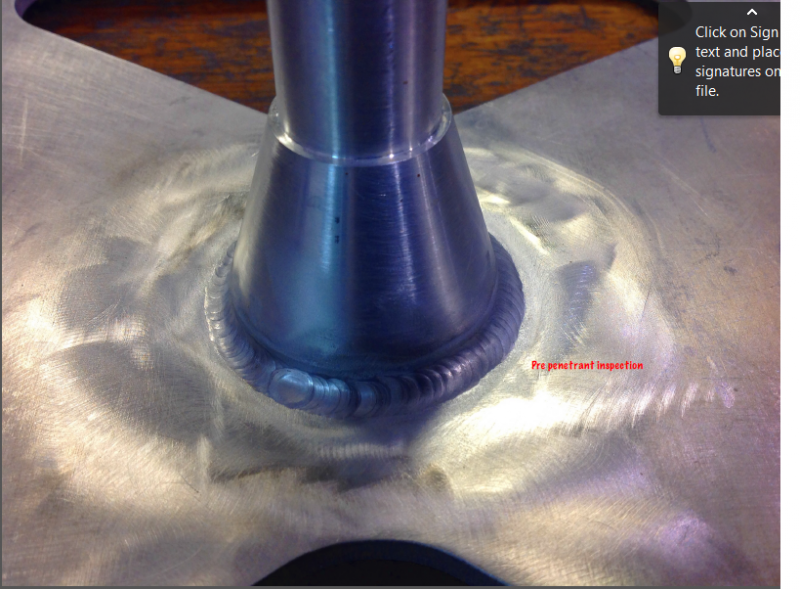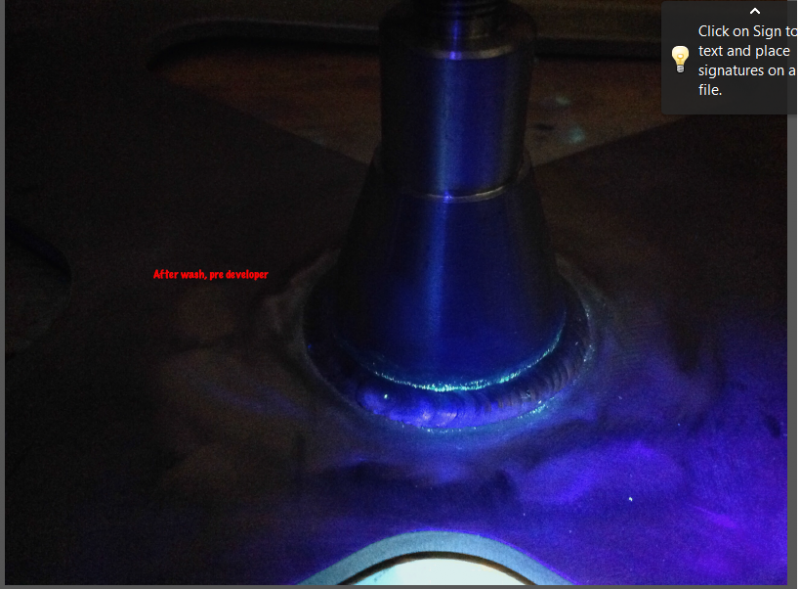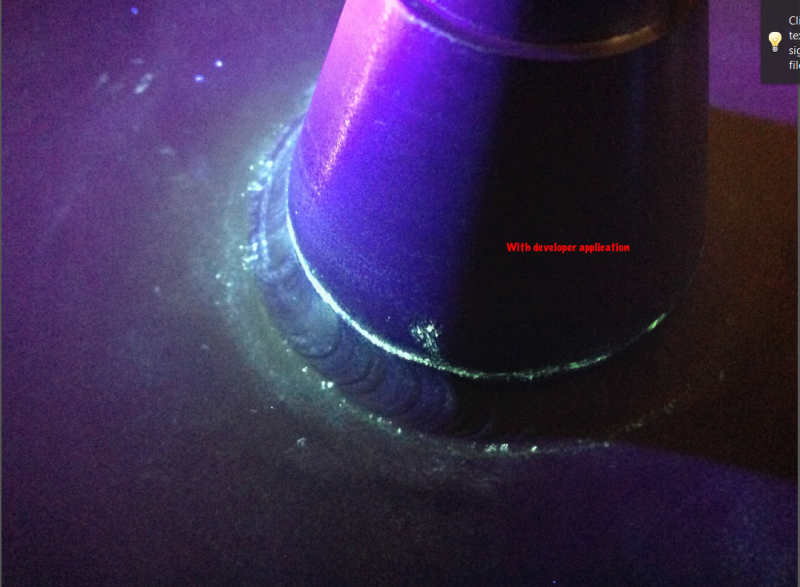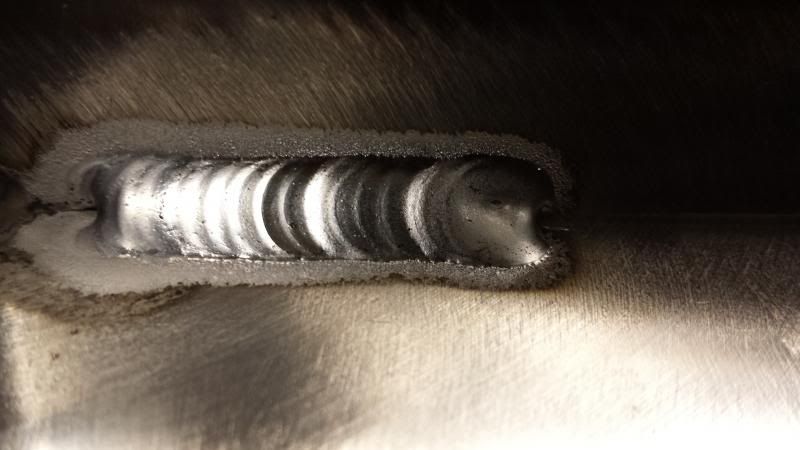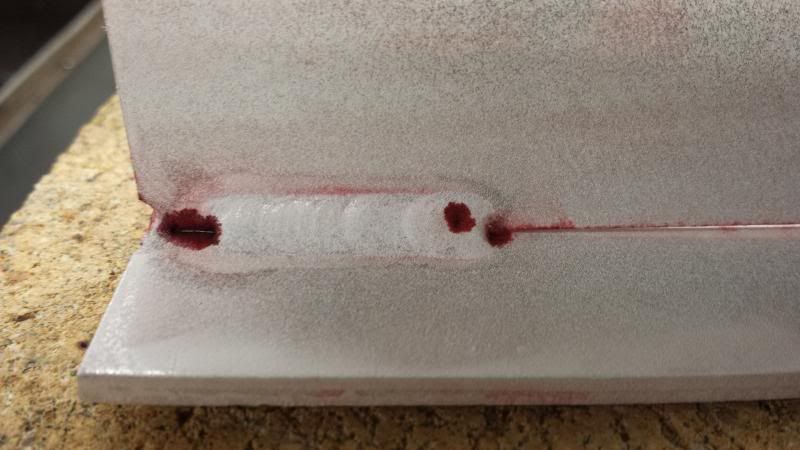
I just wanted to run this by everyone to see if anyone else has had this issue before. I will give process details, but don't worry about code requirements just yet. I'm just looking for why it's holding dye on the toes of the welds. First thought comes to mind is that the arc etch is beating the toes up pretty bad and causing some micro pitting or something. Please ask for more details if you need them. I won't be able to check this again till tomorrow morn for more questions. Thoughts on the cause of this please. (see below pics) Fluorescent
Material=6061-T6 .25" thick welded to a ground grommet.
Filler= ER4043
Fillet size=3/16"
Gas= 100% argon @30cfh
Cup size= #8 gas lense
Tungsten type= 1.5% Lanthanum, .08 Yttrium, and .08 Zirconium
Tungsten size= 3/32
Straight polarity amps= 200
Reverse Polarity amps=150
